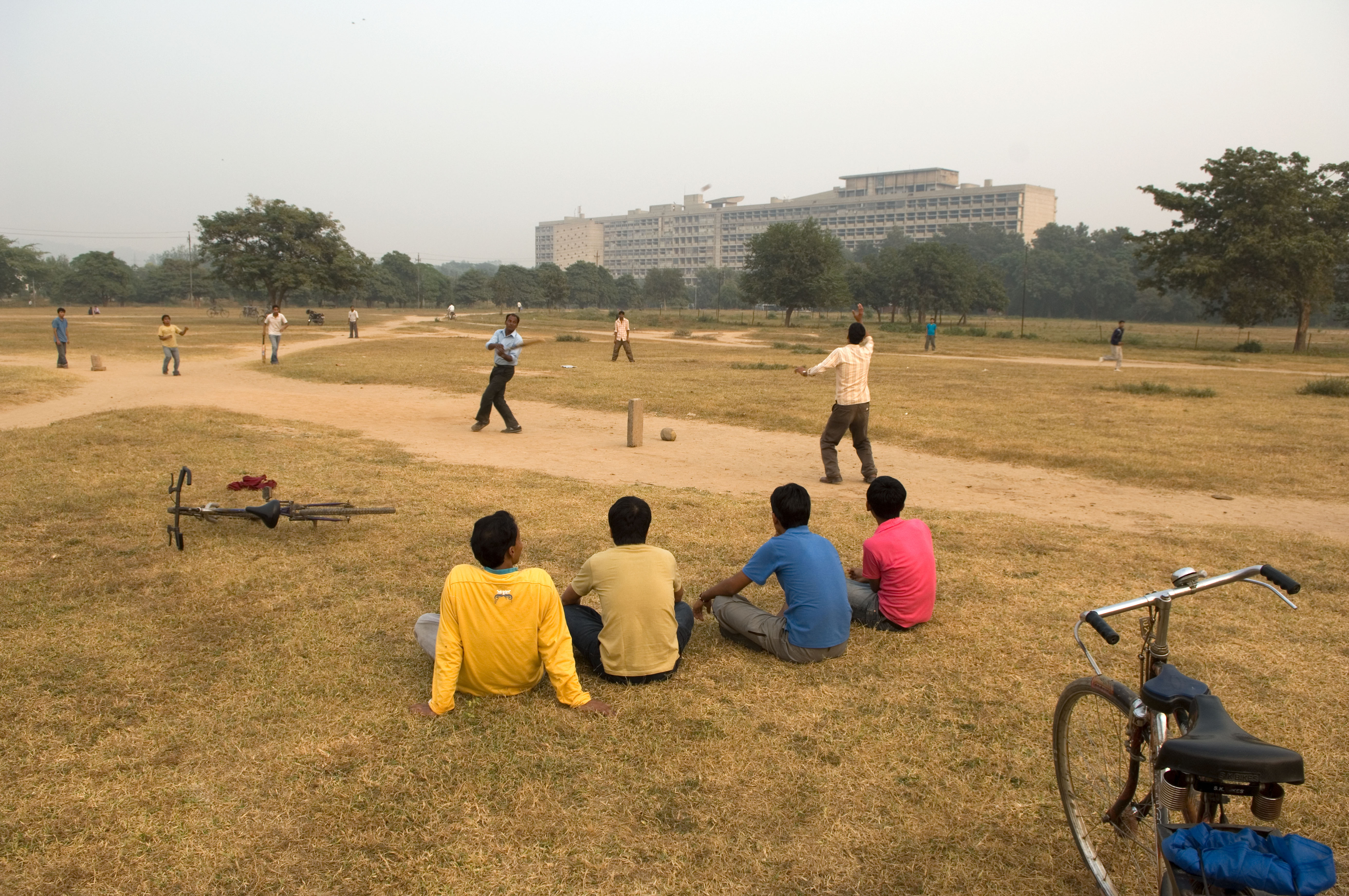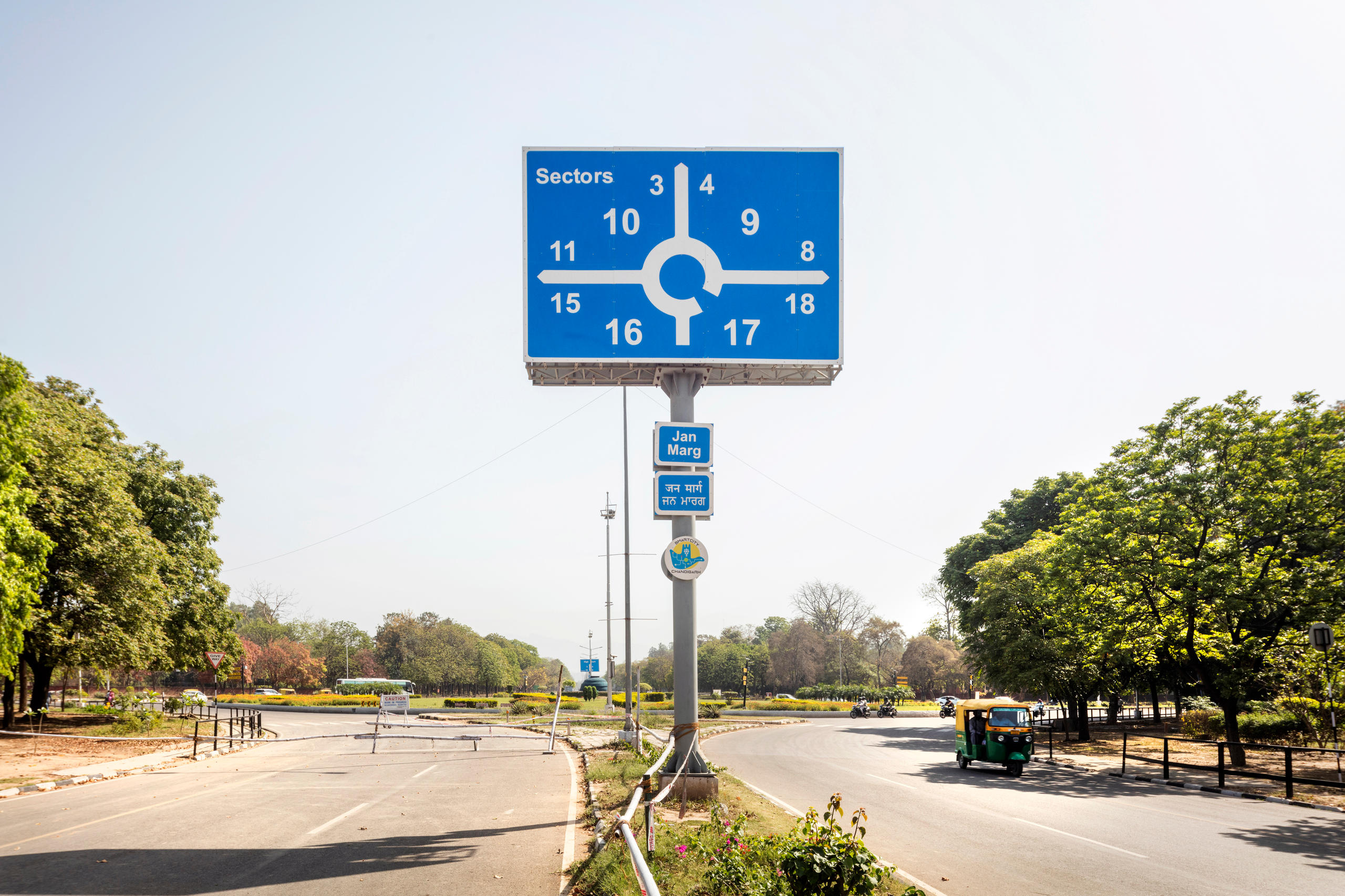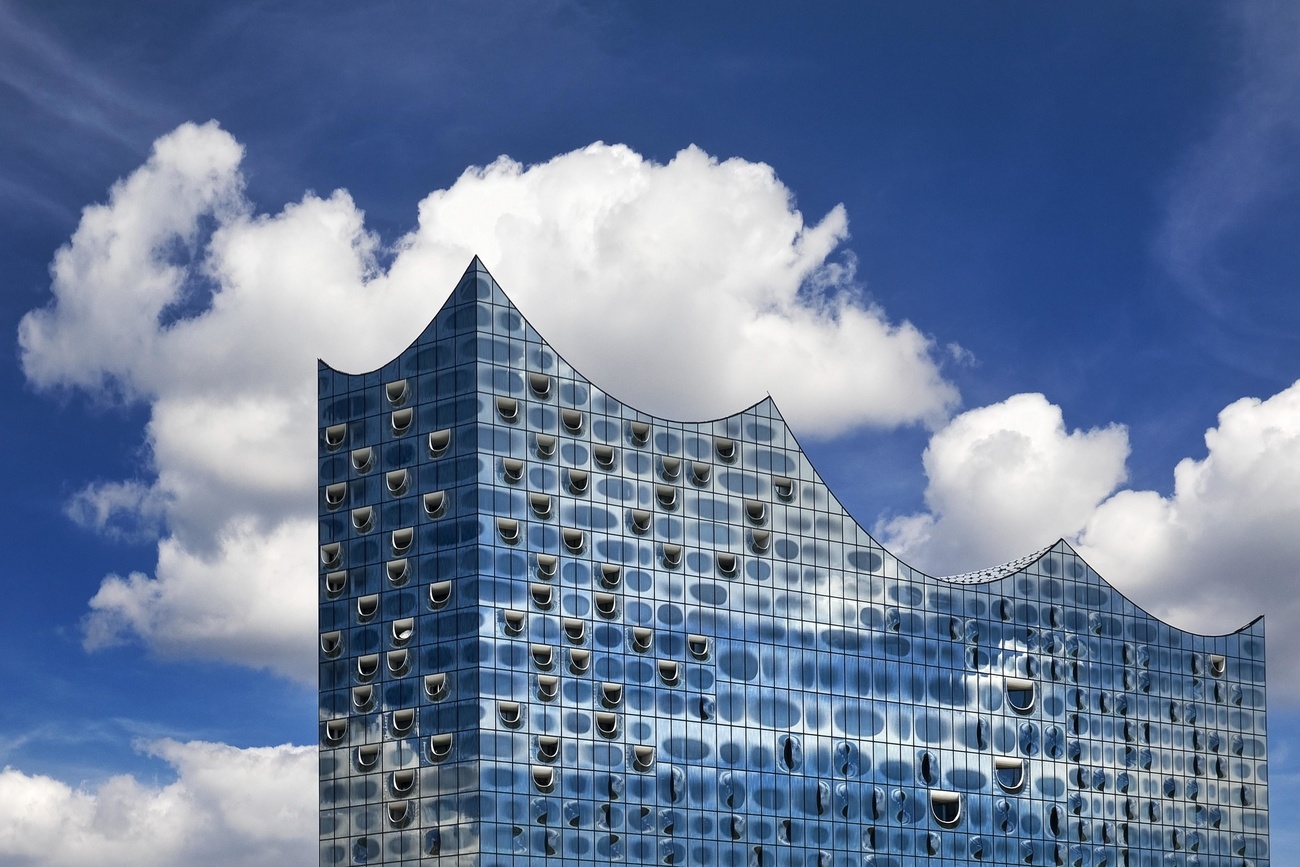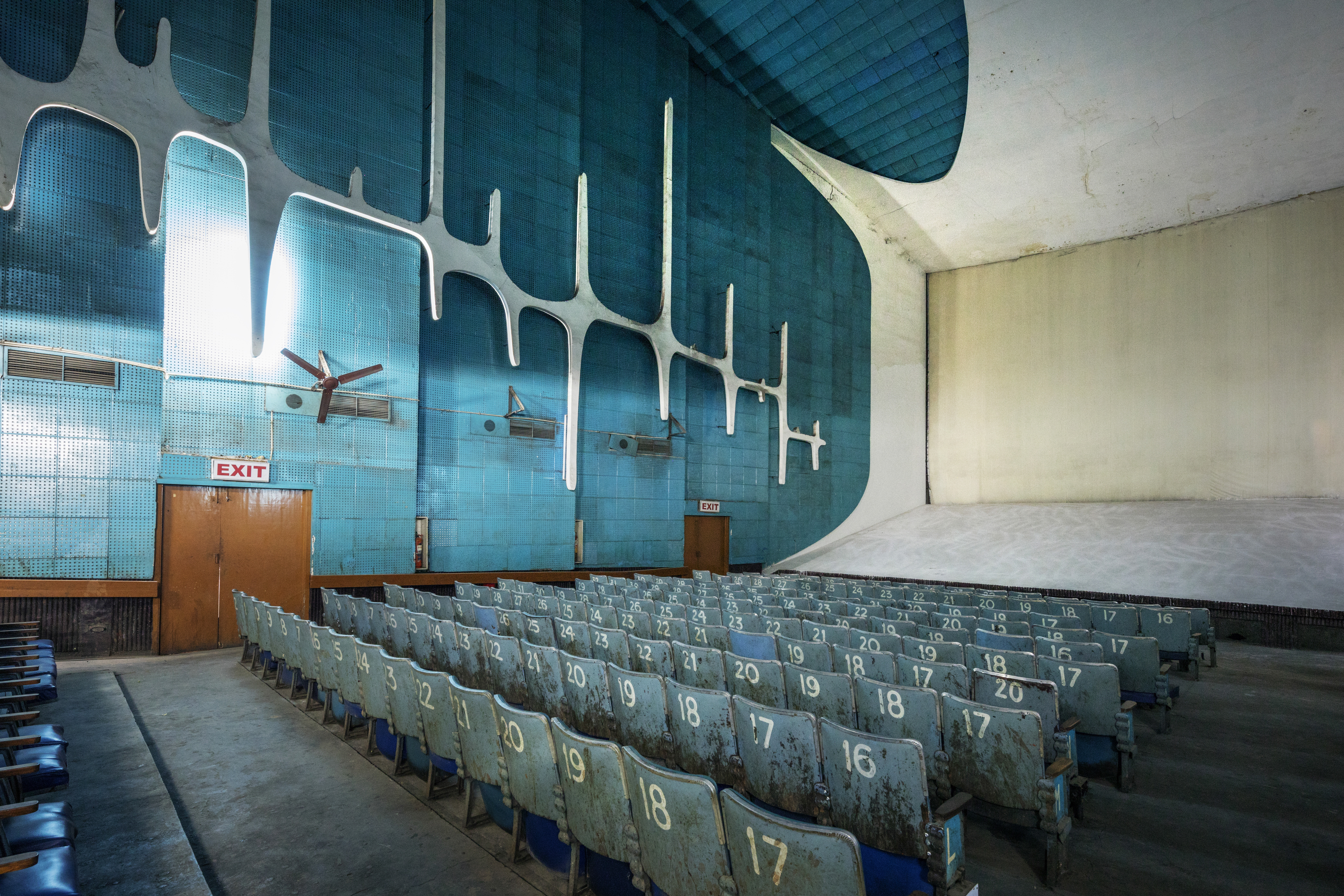
Le Corbusier’s Punjab album sheds light on India’s modernist drive

Urban spaces in India mirror centuries of invasions and colonial domination. The publication of a facsimile edition of the sketchbooks of Swiss architect Le Corbusier for the creation of the city of Chandigarh in the 1950s is a snapshot of the moment when India finally felt free to shape its own future.
India, the cradle of some of the world’s oldest civilisations, was a very young country by the time it acquired its independence from the British empire in 1947.
After the trauma of the partition that same year, which saw the creation of Pakistan and during which up to two million people were killed and 18 million displaced, leaders of the new India envisaged to project the “biggest democracy in the world” into the future by redesigning its architecture.
That’s what Jawaharlal Nehru, India’s first prime minister, had in mind when he invited the Swiss architect Le Corbusier in 1951 to draw the plan of a capital for the newly created state of Punjab, a region cut in half by the partition.

By that time, Le Corbusier was already an icon of modernist art and architecture, but to build the city of Chandigarh presented an unrefusable challenge. After all, it was nothing less than one of most ambitious experiments in urban planning and modern architecture of the 20th century.
The modernist ambition
Le Corbusier envisaged the construction of a new, modernist city from scratch, that would come complete with fully furnished apartments, government buildings, cinemas and schools.

More
Documentary shows the concrete reality of Le Corbusier’s Indian utopia
It set a forceful, high bar on the possibilities of modern architecture at that time, and was followed a decade later by a similar project: the construction of the Brazilian capital, Brasília, designed by Oscar Niemeyer, Le Corbusier’s younger partner in the project of the UN building in New York (1948-52).
During his first weeks visiting the region where the city was to be built, Le Corbusier kept a notebook in which he recorded his written or sketched notes and personal reflections, as well as the notes and schematic solutions drawn up during meetings with the local authorities and city planners.

Since the 1950s, innumerable studies have been published on the development of Chandigarh, but very little is known of the embryonic phases of the planning of the city. Le Corbusier’s Punjab album, kept at the Fondation CorbusierExternal link in Paris, is a primary source for reconstructing the issues faced by the small team of architects and government officials who developed the outline of Chandigarh in just a few days. It also presents a remarkable record of the local environment registered during Le Corbusier’s travels around the region.
Chandigarh wouldn’t be the only mark left by the Swiss architect in India. Le Corbusier also took on more discreet architectural projects in other north Indian cities such as Ahmedabad.
A textile-trading hub since the early 15th century, Ahmedabad had 70 textile mills scattered across the city when Le Corbusier was approached to design a flagship building for the Mill Owners’ Association in the early 1950s. Built between 1952 and 1954, the building has served the association for nearly 60 years, although parts of it had fallen into disrepair by the 1990s.
Effacing the Raj
Behind Nehru’s invitation, there was a deliberate project to overcome the colonial traces left by the British Raj all over the country, and more conspicuously in the main cities.
Kolkata (formerly Calcutta) was founded by the East India Company: the first records of the foundation of the settlement date back to 1690, although excavations in the area have shown that people have inhabited the site where the city stands for more than 2,000 years.
Mumbai (formerly Bombay) was thoroughly transformed by British architects from the 18th century until independence. Today it still displays huge tracts of neoclassic and Victorian-Gothic buildings. For some, it is the most characteristically Victorian city in the world, even more than any British city.
Delhi, old and new, was also designed by invading powers. The foundations of what is now Old Delhi were laid out in the 13th century by Muslim invaders, followed later by the Mughal kings from Central Asia. Delhi was incorporated by the British in 1803 and turned into the capital of the empire’s Jewel of the Crown in 1931, with a totally revamped urban sprawl developed by the colonial power.
Arguably, the invitation of Western architects and planners to design and redesign buildings and cities in the newly independent India could be seen today as another step in the cultural colonisation of the country. At the time, however, it meant rather an ambitious attempt to integrate India in the global modern flux of the times.

Le Corbusier subscribed to that vision and tried his best to mix the Indian reality he experienced – with its ancient technologies of survival, philosophies, and beliefs – with the modernist framework. “It will be a city of trees,” he wrote in a letter to his wife. “Of flowers and water, of houses as simple as those at the time of Homer, and of a few splendid edifices of the highest level of modernism, where the rules of mathematics will reign.”
Le Corbusier conceived the master plan of Chandigarh as analogous to the human body, comprising a “head” (the Capitol complex), a “heart” (the city centre), “lungs” (open spaces), the “intellect” (schools), the “circulatory system” (the network of roads), and the “viscera” (the industrial area). The concept of the city is based on four major functions: living, working, care of the body and spirit, and circulation.

More
Herzog & De Meuron: architecture is not a machine
Most of the city was completed by the early 1960s and the project required the relocation of more than 20,000 people from 58 villages.
Architectural battleground
The spirit of innovation that brought Le Corbusier and other Western architects to India in the mid-20th century stands at odds with the architectural battleground of the country today.
Since taking office in 2014, Prime Minister Narendra Modi has advanced a nationalist Hindu agenda by staging an Indian version of the West’s “culture wars” aimed at curbing political opposition and disenfranchising the enormous Muslim minority – roughly 213 million people, or 15% of the population.
This nationalistic wave is focusing its efforts on a sometimes fantasised past. Examples abound. Modi is tackling the colonial legacy by changing names of streets and cities throughout the country. In Delhi, his Central Vista redevelopment plan is a flagship initiative to reshape the architecture of the Indian capital, renovating the stretch of British-era monuments and government buildings.

More
Le Corbusier’s Chandigarh
At the same time, the building and renovation of Hindu templesExternal link are openly announced as part of his effort to create a “New India”External link – an idea of “a country capable of maintaining its ancient heritage and restoring its spiritual and cultural glory while simultaneously making advancements towards its modern aspirations”.
A more recent contentious issue of the government is the search for the remains of the mythological city of IndraprasthaExternal link, supposedly lying beneath Delhi. Layers and layers of ancient settlements have been excavated, but so far no trace has been found of the legendary city mentioned in the founding epic Mahabharata, compiled around the 4th century BC.
Meanwhile, many modernist milestones of the first years of Independence display overt signs of decay, mirroring the fading resonance of their original vision.
Le Corbusier Album Punjab, 1951, Maristella Casciato (editor). Lars Müller PublishersExternal link, Zurich , 2024.

In compliance with the JTI standards
More: SWI swissinfo.ch certified by the Journalism Trust Initiative



































You can find an overview of ongoing debates with our journalists here . Please join us!
If you want to start a conversation about a topic raised in this article or want to report factual errors, email us at english@swissinfo.ch.